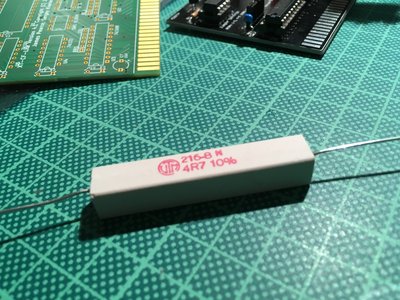First post, by root42
- Rank
- l33t
So some people here mention that one should put a ballast resistor on the ATX power supplies, when powering AT machines.
I wonder how sensible this is, and if it is really needed. My 286 is currently running happily, but I am worried I might damage the ATX PSU or my mainboard due to this...?
Here is a blog post describing installing a 4.7 Ohm resistor for usage in a 3D printer with ATX PSU:
https://brazenartifice.wordpress.com/2011/12/ … 12v-regulation/
I have a 4.7 Ohm 10W resistor that I could use:
But I wonder: is it necessary? What are the disadvantages, apart from the resistor running hot?
